How to sit together on a flight for free - expert tips for parents
We look at how you can sit together for free on a flight, whether airlines have to sit you together and how they decide, as well as explaining how much some airlines might charge you to sit as a family
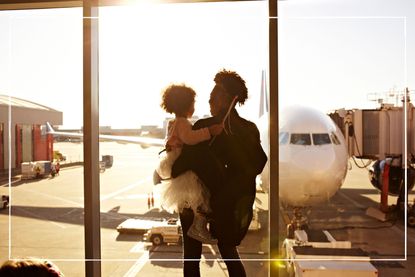
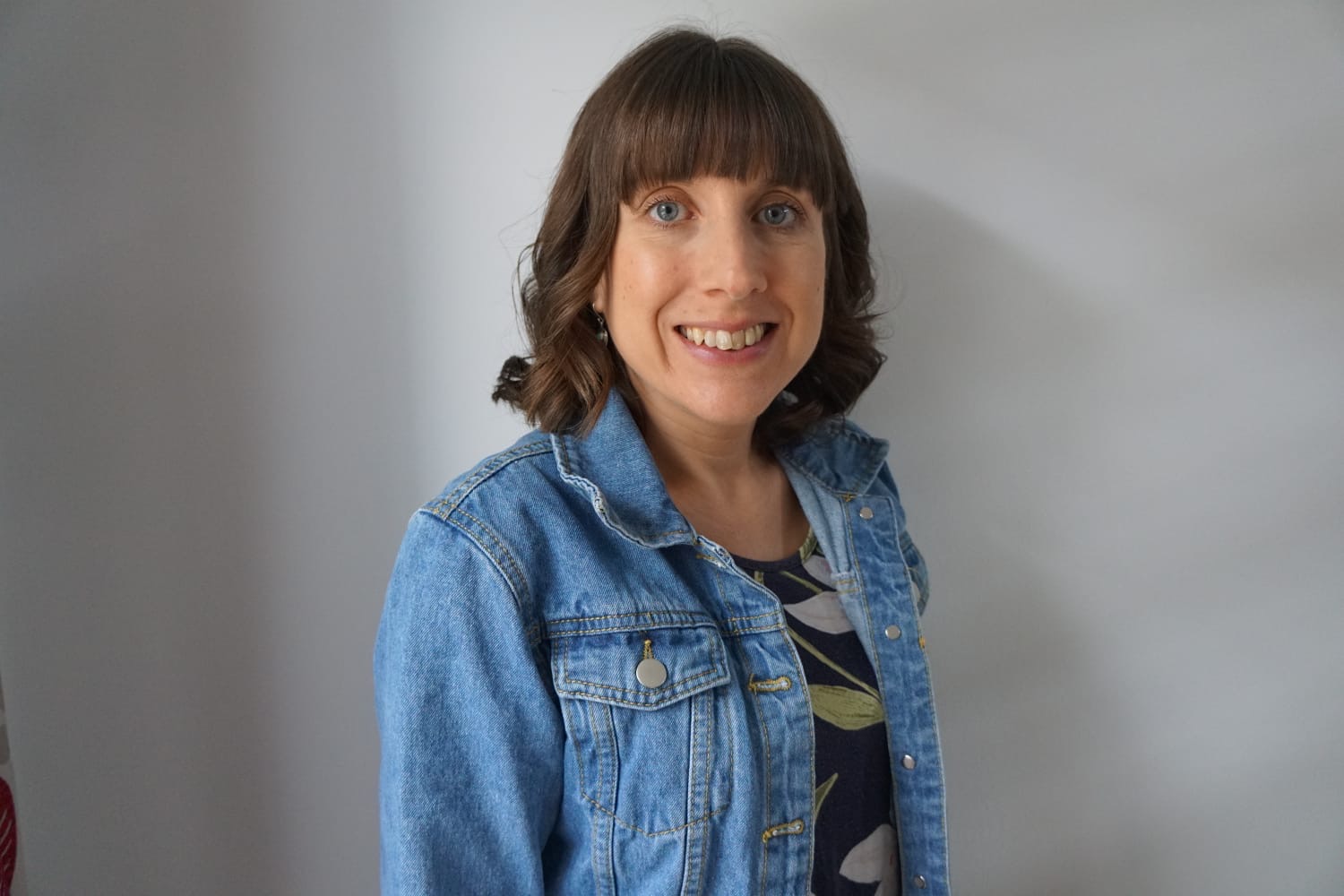
Recent updates
This article has been updated to provide more expert insight and and extra tip on how to sit together on a flight for free. We have also fact checked any prices, terms and conditions or rules mentioned.
Knowing how to sit together on a flight for free can be one less thing to worry about at a time when you're heading off on holiday. While you might know how to save money at the airport, the last thing anyone wants is to have to pay extra so you can all sit together on the flight.
James Brockbank, founder of The Family Vacation Guide, said: “We’ve all been through the process of booking a flight to our dream destination, wherein we’ve chosen a flight date and timing and even entered all our details, only to be asked whether we want to pay to select a seat. Some of us may panic and give in, some of us will push the decision to the check-in stage. But, what’s the best thing to do when travelling as a family with kids?
“Not all hope is lost if you don’t pay for specific seats. A majority of airlines that fly from the UK and within Europe try to allocate group seats all together.”
Before you jet off, it's also a good idea to check how long it takes to get a passport in case yours is due to expire or you need to apply for one for your child. It's also worth heeding Martin Lewis' warning about using your phone data abroad too.
How to sit together on a flight for free
If you have young children or kids that are nervous flyers, it can be important to be seated together. Some parents might want to sit close to their children to check they behave themselves for the journey. But unfortunately, not all airlines automatically seat families together, unless they pay more. However, there are ways you can achieve this for free.
1. Pick your airline carefully
Make sure you are well versed with airline policies before you fly if you want to sit together for free. Some airlines say that for parents travelling with children under 12-years-old, at least one parent/adult must pay for a seat reservation next to the child (the child’s seat reservation is free).
But not all airlines will charge you extra to sit with your child; some allocate seats for families together for free.
GoodtoKnow Newsletter
Parenting advice, hot topics, best buys and family finance tips delivered straight to your inbox.
A survey by Which? looked at which airlines were most likely to seat families together, even if they didn’t pay for seat selection. The results were good news for BA customers, with 94% of those questioned ending up seated with their travel companions anyway. The chances of being separated in the cabin are higher if you fly with Ryanair (only 66% were seated together) or Wizz Air (61%).
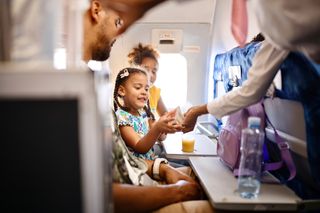
2. Check-in early
If you don’t pay for seats, but check in early, chances are that you will be allocated seats with your group, so long as the airline has seats available together.
Make sure you’re up to speed about when check-in opens and set an alarm if necessary so that you’re up in time.
3. Make a specific request
If you’ve not been able to select your seats together at the booking stage, it might be worth making a special request afterwards.
“Make enquiries at the airline’s check-in desk at the airport. Enquire about seating availability for your family or even if they can seat your family together in an upgraded section,” said James Brockbank, founder of The Family Vacation Guide. “If you expect the airport to be crowded, with long check-in lines, try phoning up the airline about your family booking and request seats together.”
4. Ask another passenger to swap seats
You might be able to swap seats with a passenger once you’re onboard your flight - just by asking nicely. Make your request politely, but remember too that the other passenger is under no obligation to agree to switch. But by remaining friendly and and accept a negative answer with good grace, it's possible another passenger may overhear and offer to switch seats which can resolve the situation for everyone.
Goodto.com's Money Editor, Sarah Handley says: "It's worth being mindful that another passenger may have paid extra for their chosen seat, and might be unwilling to give it up, especially if your seat can't match the perks or position they may have paid for."
Do airlines always seat parents and children together?
While many airlines might do their best to sit parents and children together, there’s sadly no legal right to sit next to your family, not even children, on a flight. However, the Civil Aviation Authority (CAA) does have guidelines about how airlines should allocate seats to people travelling together.
It says:
- Young children or those with disabilities should be sat with their accompanying adult wherever possible
- For family groups and large parties of children, the airline should aim to seat children close to their parents or guardians
- Young children and infants should be ideally seated in the same row as their parent or guardian. But if this isn't possible, they should be separated by no more than one row otherwise the speed of an evacuation in the event of an emergency could be compromised
- An airline should also make every effort to ensure children on flights can be readily supervised by their parent or guardian.

How to different airlines decide on seat allocation
Most airline seat allocation systems - with the notable exception of Ryanair - will try to seat those on the same booking together.
- British Airways, TUI and Virgin Atlantic say that all children under 12 will be seated with an accompanying adult. However, TUI and Virgin Atlantic warn that being sat with an adult could mean in front of, behind or across the aisle.
- Jet2 says it aims to seat children with adults in their party, but there are no guarantees.
- EasyJet says its seating system will always try to seat families together, but seats are allocated on a first come first served basis, so it recommends early check-in. The airline says it will make sure each child under 12 is seated close to an adult on your booking.
- American Airlines says its system will detect if you’re travelling as a family and will search for seats together automatically before the day of departure. But if seats are limited it will ensure children under 15 are next to at least one adult.
- Air France states that if you’re travelling as a family with a child 14 years or younger, it will reserve your seats free of charge.
- Ryanair says that it’s mandatory for children under 12 to be seated next to an adult they are travelling with. The airline allows you to reserve seats for free for a maximum of four children per one adult, but that adult must pay a reserved seat fee. .
Do you ever have to pay to sit together on a flight?
If you want absolute certainty that you’ll be able to sit together as a group on a flight, then paying for seats will usually be your best option.
However, a few airlines will let groups sit together on a flight for free. For example, some long-haul carriers, such as Japan Airlines, let economy passengers select a seat free of charge as soon as they book. Virgin Atlantic Economy customers with hold luggage can select a seat for free at any time, while British Airways passengers checking-in a hold bag can select seats for free as soon as check-in opens.
Mum of twins, Harriet Hirsch was split up from the rest of her family on a trip in the summer of 2022. She said: “We went on a family trip to Spain on Easyjet with our 13-year-old twins last year and as we were trying to keep the cost down, we didn’t pay extra to sit together. The flight was very busy and we ended up split up all around the plane. The kids didn’t mind too much – they just play games on their phones for the whole flight anyway – but not being together seemed like an odd start to the holiday. Paying for seats seems like a gamble as you might all end up together for free. It also made it a bit awkward paying for drinks etc on the plane as the kids don’t have debit cards and Easyjet don’t take cash.”
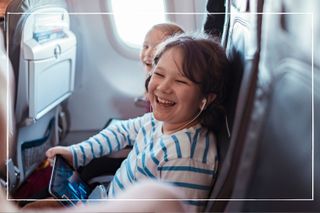
Which airlines charge families to sit together and what are the fees like?
Airlines such as EasyJet, TUI, Jet2 and Ryanair will charge families that want to sit together as one group.
The cost of booking a particular seat on a plane can range from anything between £3 to £100, depending on which airline you’re flying with and what class you’re flying.
For example, if you’re flying business class on British Airways, it can cost you up to £91 to pre-book a seat.
- EasyJet seat allocation prices start from 99p for a standard seat, from £7.99 for an up front/overwing seat (extra legroom), or from £12.99 if you want a seat in the first row (extra legroom).
- Ryanair prices start from £3 for a standard seat, from £7 for a front seat, and from £14 for an extra legroom seat
Fees for seating can quickly add up and, in some cases, paying them can be a false economy. For this reason, it’s important to compare the total cost against that of a more expensive airline that won’t charge you for seat reservations to see which works out to be the cheapest choice overall.
How to choose the best seats when travelling with kids
If your airline allows you to choose seats, the following tips can help you find the best seats when travelling with kids:
Sit near the front or the back
Sitting near the front or back of the plane has a number of benefits such as being close to the toilets and being first on and off the aircraft, helping to avoid long waits on either side.
Use a seat map
Website Seatguru lets you browse the seating charts of more than 1,000 aircraft spanning 175 airlines. Simply enter your airline name, flight number and date of travel and you’ll get detailed information about seat legroom dimensions, where the toilets are located and even reviews from other users.
But bear in mind that there may be circumstances where an airline will need to change the aircraft type at late notice. The new configuration or availability of seats could result in passengers who have paid to be seated together being allocated seats apart from each other. Before paying for a particular seat, check with the airline whether this arrangement will be guaranteed in all circumstances.
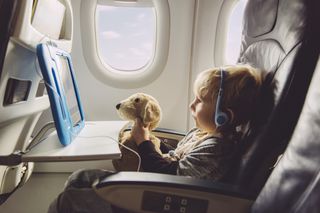
Choose a window seat
Window seats are worth booking for kids as looking out the window during a flight can keep them occupied, and also be a good location for a nap.
Select extra legroom
Travelling with kids usually means bringing a lot of stuff with you, so it might be worth looking for those seats with extra legroom. Just remember that children are not permitted to sit near emergency exits and legroom seats can cost more.
Bulkhead seats are more spacious as they have no seat in front of them and can be a good option for those with infants as there is room for a crib.
Looking for more travel tips? Check out our expert guide on how to get to sleep on a plane and these natural remedies for travel sickness.

Mum of two, Rachel is a freelance personal finance journalist who has been writing about everything from mortgages to car insurance for over a decade. Having previously worked at Shares Magazine, where she specialised in small-cap stocks, Rachel developed a passion for consumer finance and saving money when she moved to lovemoney.com. She later spent more than 8 years as an editor at price comparison site MoneySuperMarket, often acting as spokesperson. Rachel went freelance in 2020, just as the pandemic hit, and has since written for numerous websites and national newspapers, including The Mail on Sunday, The Observer, The Sun and Forbes. She is passionate about helping families become more confident with their finances, giving them the tools they need to take control of their money and make savings. In her spare time, Rachel is a keen traveller and baker.
- Emma LunnPersonal finance expert